|
Overview:
Microsoft Word is a word processor/text editor. Other similar programs are Windows' Notepad and Windows' Word Pad. Word is by far the most powerful of the three. It has many more features than the casual user will need. I will only cover the basics here. Below, we see a blank page (duh!). Below the main toolbar (with File, Edit...), we see the formatting toolbar. On the left, you can see the 'styles and formatting' drop-down menu. This contains some commonly used styles. Here you can quickly select a style of text that you use often. The styles and formatting are customizable and you can add to the list.
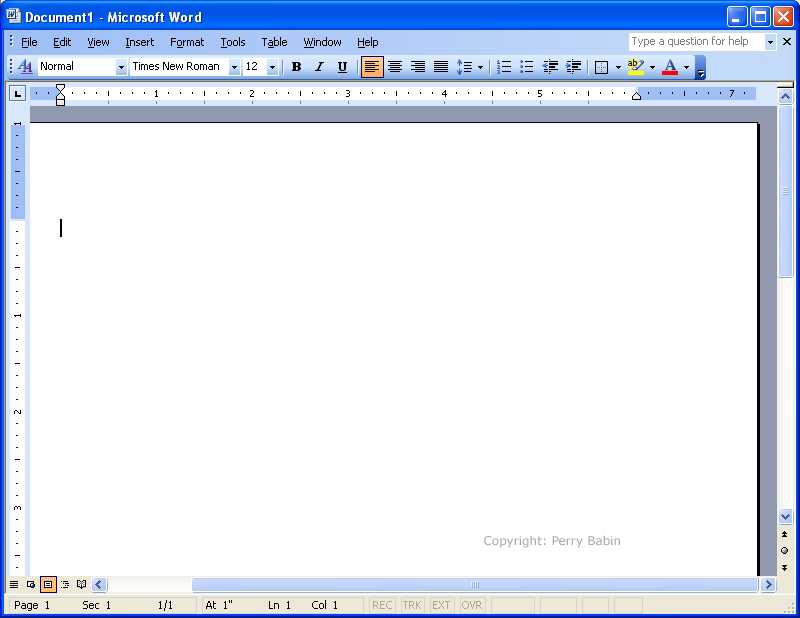
- Next is the 'font' or 'typeface' button. Here you select the font you desire. The default typeface is Times New Roman.
- To the right of the font button is the font size selector button. The default is 12 points. This means that the tallest characters will be 0.12" tall. You can select any size in the menu or directly enter the desired size. You should know that there is a system of measurement using 'points' and 'picas'. In that system, there are 12 points per pica and 6 picas per inch. This means that a 72 point letter would be one inch tall but that doesn't hold true in Word. Looking at the ruler on the side of the text, you can easily see that a 100 point letter is 1" tall.
- Next are the BOLD, ITALIC and UNDERLINE buttons. These are self explanatory.
- To the right of those buttons, you will find the alignment buttons. They force the text to align to the left or right, center or justify. When set to justify, both the left and right sides of the paragraph will align (as you see in newspapers).
- Next is vertical line spacing. It simply sets the spacing between adjacent horizontal lines of text.
- Just to the right of the line spacing button, you find the line numbering button. When a group of lines of text are selected, each new line will be numbered (increasing from top to bottom).
- The next button performs a similar function but instead of making a numbered list, it uses bullets (dots or similar characters to indicate that the bulleted item is a new item/topic/subject).
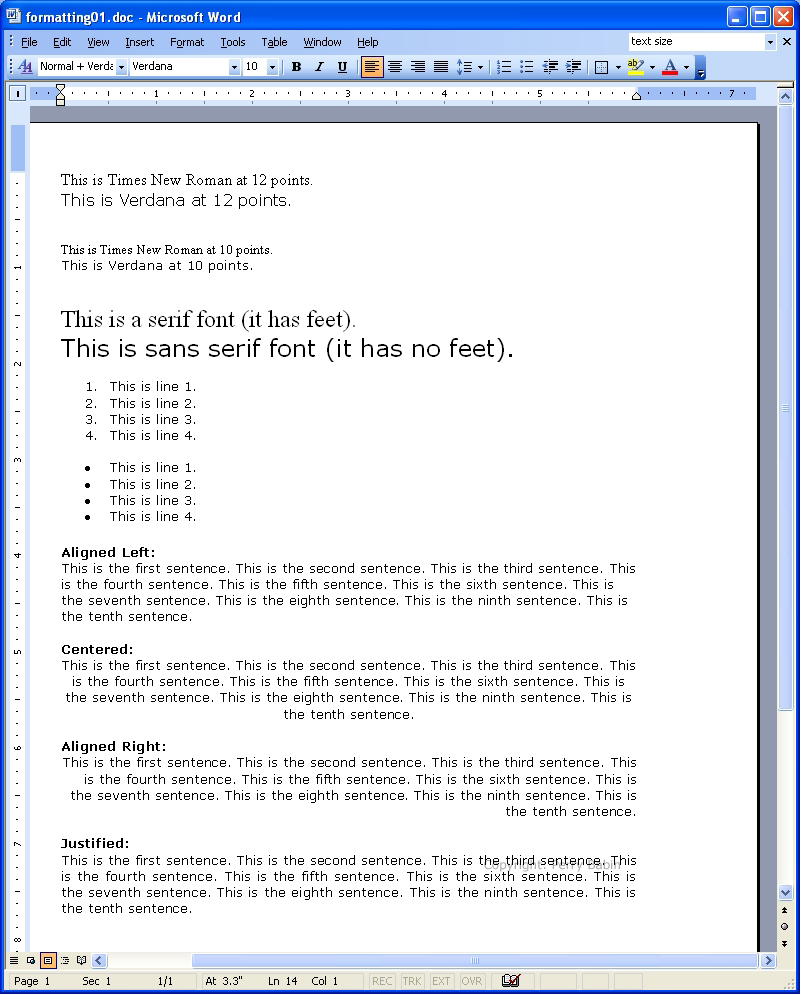
Adding Images to the Text
In the following image, you can see that we have the 'insert' dialog box open. When you click on the 'insert picture from file option, Word will open a Windows Explorer window to allow you to choose the image you want to add to the document.
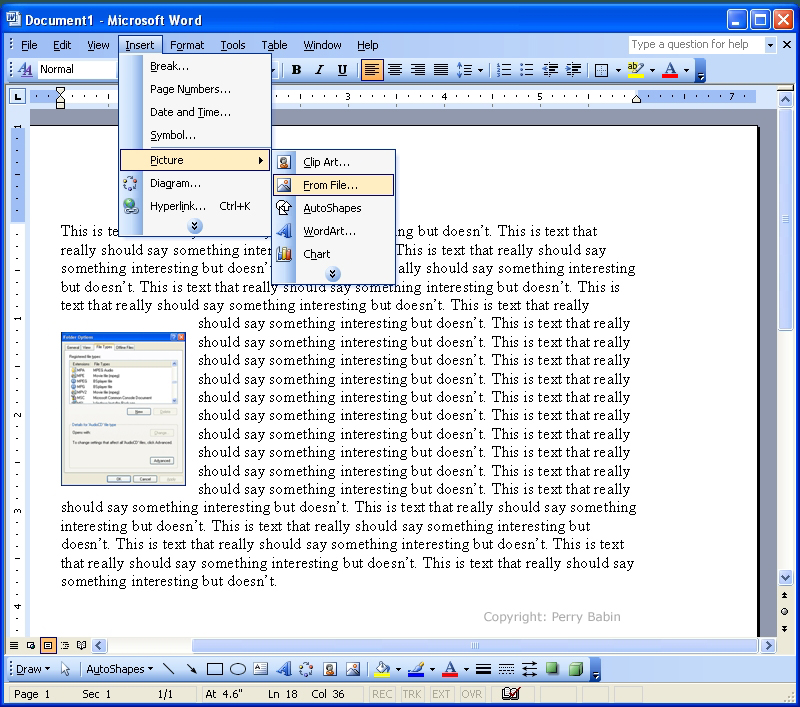
If the image is larger than you want it to be in the document, you can easily resize it by grabbing any of the 'handles' on the corners or sides of the image. The corner handles allow simultaneous height and width adjustment. The side and top handles allow resizing in only one direction. The little green handle allows you to rotate the image.
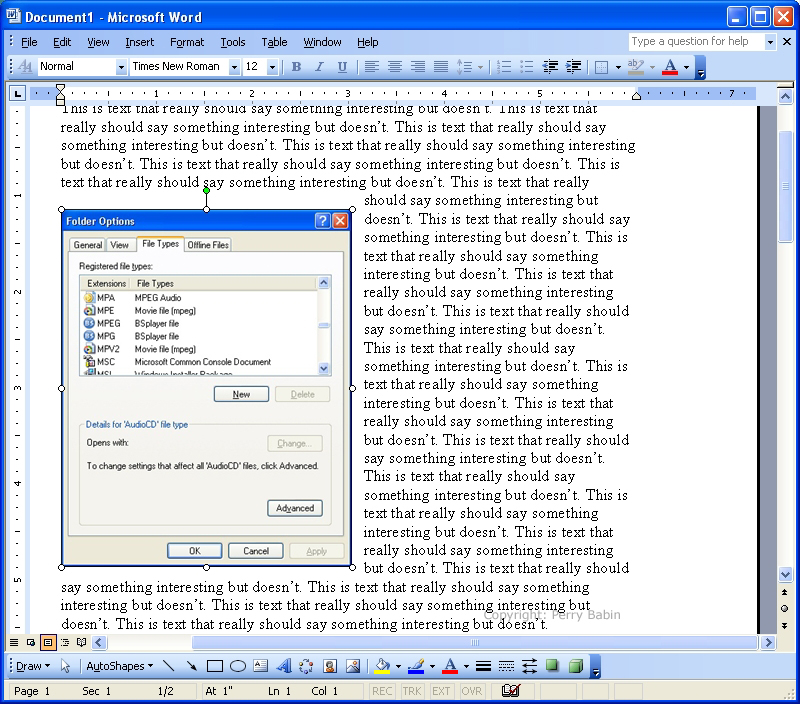
Word Wrapping:
If the image falls in the middle of the text, you can tell the text to wrap in a number of ways. The following wrap is set to 'square'.
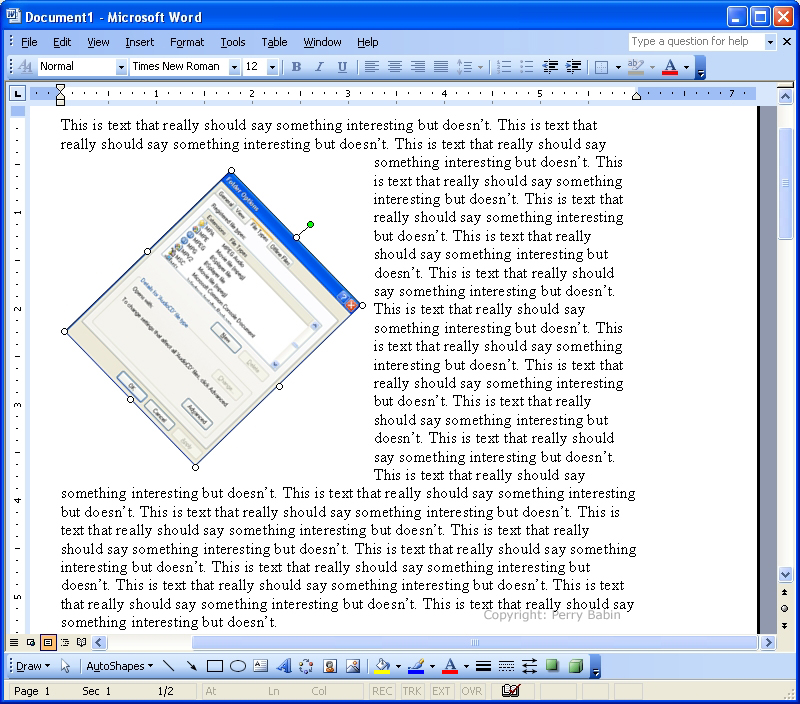
Here, the wrapping is set to 'tight'. To access the image formatting, you can double-click the image or select 'format picture' from the right-click dialog box.
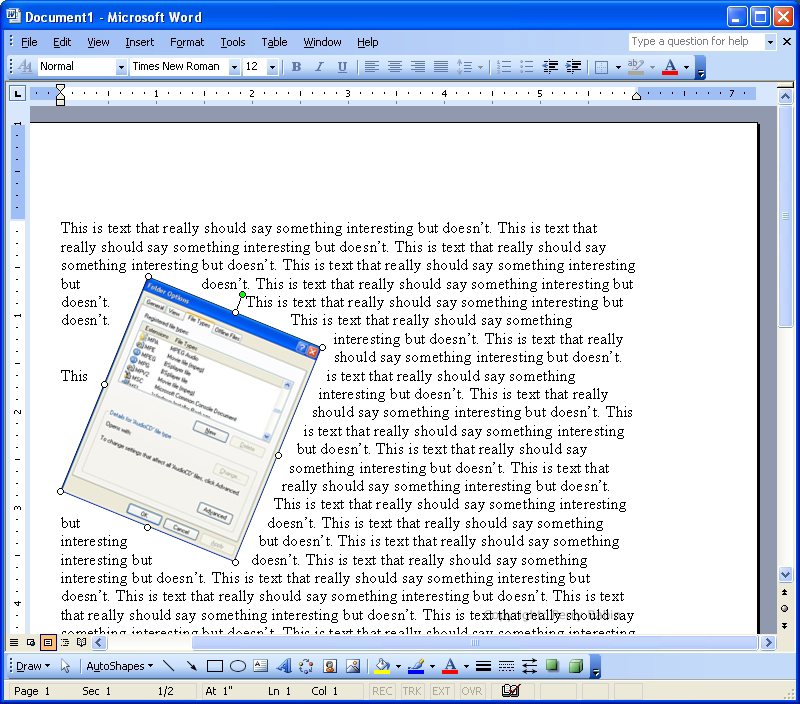
Spell Checking:
Word has spell checking and will highlight any word that is misspelled or any word that is not in its 'dictionary'. Here you can see that I misspelled 'interesting'. If you right-click the highlighted word, you will be given one or more options. When you click the desired word from the choices (only one choice is shown here), the misspelled word will be replaced.
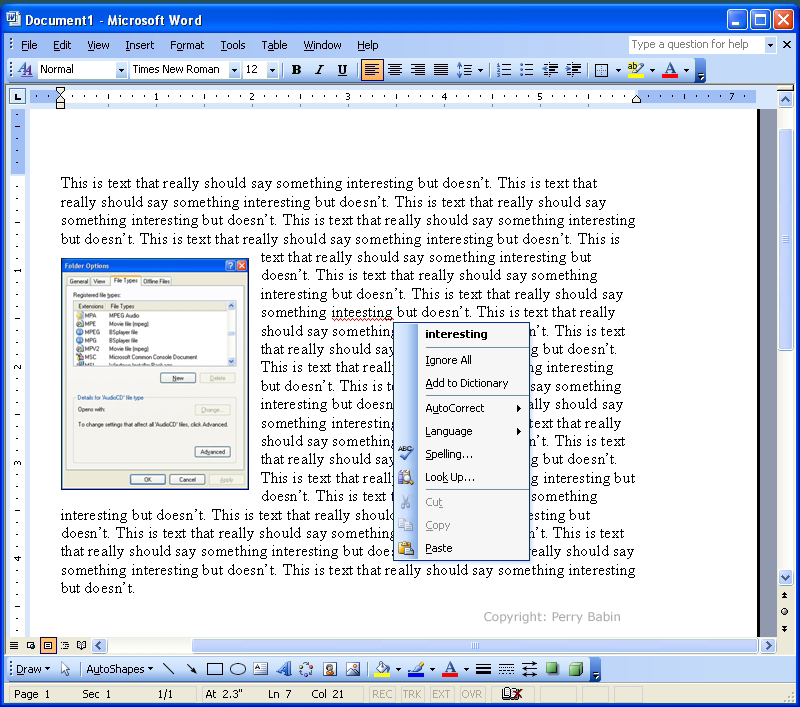
Grammar Checking:
In the following image, you can see that the word 'is' is highlighted (green underline). This is the grammar checking feature of Word. It is letting me know that the grammar is incorrect. Again, we can right-click on the word and the dialog box will give us alternatives. Here, the only alternative is 'are'. Clicking 'are' will insert it into the sentence.
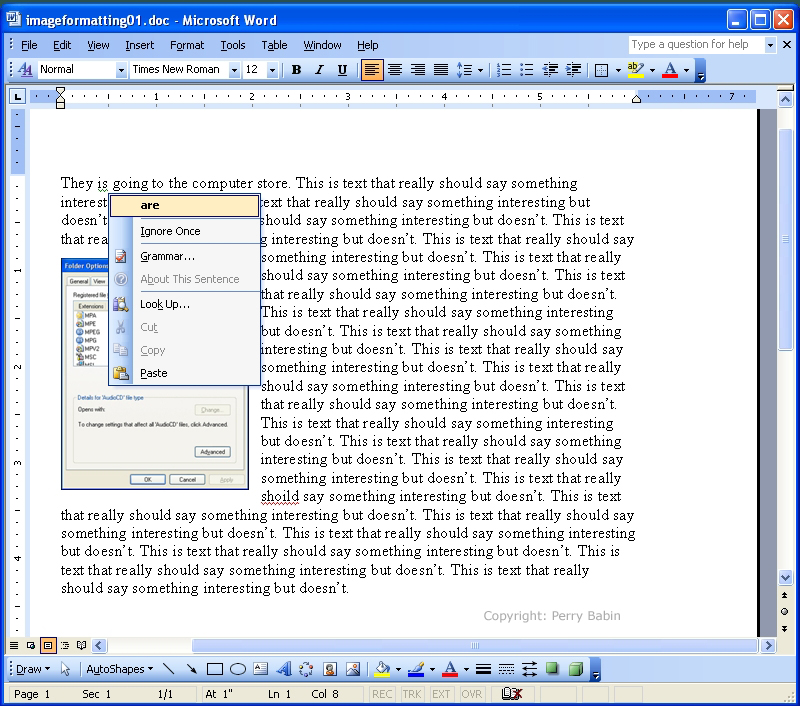
Missing Words:
Below, you can see that there is another highlighted area but this time, there are two words that are underlined. If you right-click on the highlighted section, you will get one or more alternatives. Here, we would select the middle choice. Keep in mind that not all of the choices will work in all situations. They are simply suggestions that could possibly make the sentence grammatically correct.
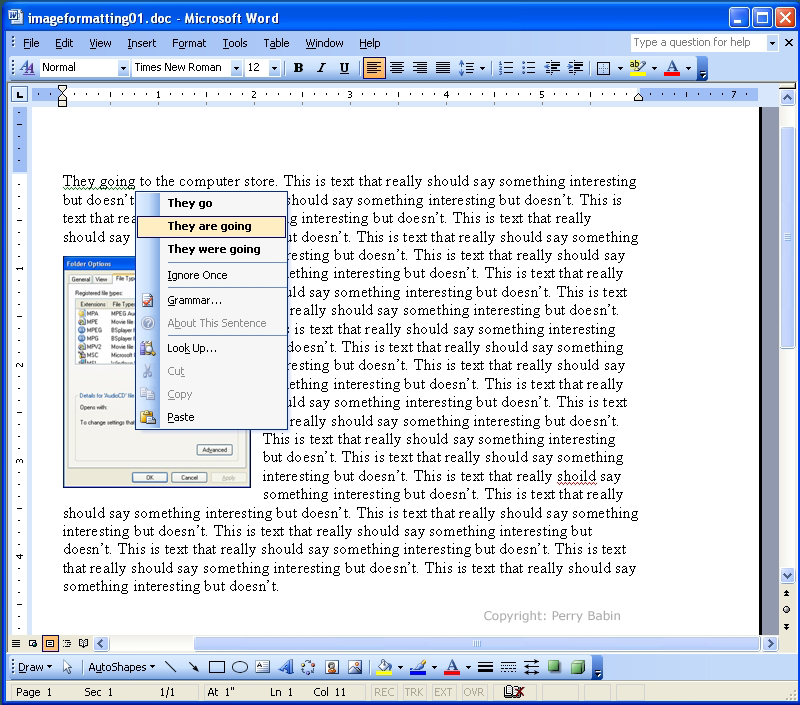
|
You May Be Interested in My Other Sites
-
This site was started for pages/information that didn't fit well on my other sites. It includes topics from backing up computer files to small engine repair to 3D graphics software to basic information on diabetes.
-
This site introduces you to macro photography. Macro photography is nothing more than the photography of small objects. It can take quite a while to understand the limitations associated with this type of photography. Without help, people will struggle to get good images. Understanding what's possible and what's not possible makes the task much easier. If you need to photograph relatively small objects (6" in height/width down to a few thousandths of an inch), this site will help.
-
If you're interested in air rifles, this site will introduce you to the types of rifles available and many of the things you'll need to know to shoot accurately. It also touches on field target competition. There are links to some of the better sites and forums as well as a collection of interactive demos.
-
This site is for those who want to install or update their car stereo. It begins with the most basic electronics theory, progresses into basic transistor theory as well as covering virtually everything associated with car audio.
|
|








